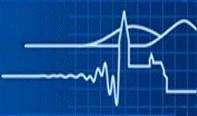SS 2019 - Physical Processes of Self-Assembly and Pattern Formation
Lecturer: Prof. Dr. Günter Reiter
Time: 3 hrs, Thu 10:15-11:00, Fri 10:15-12:00
Location: HS II
Tutorials: Wed 10:15-12:00, SR 3OG HH
Start: 25.04.2019
Goal:
Questions about how organization and order in various systems arises have been raised since ancient times. Self‐assembling processes are common throughout nature and technology. The ability of molecules and objects to self‐assemble into supra‐molecular arrangements is an important issue in nanotechnology. The limited number of forms and shapes we identify in the objects around us represent only a small sub-set of those theoretically possible. So why don't we see more variety? To be able answering such a question we have to learn more about the physical processes responsible for self-organization and self-assembly.
Preliminary program:
“Physical laws for making compromises”
Self-assembly is governed by (intermolecular) interactions between pre‐existing parts or disordered components of a system. The final (desired) structure is 'encoded' in the shape and properties of the basic building blocks.
In this course, we will discuss general rules about growth and evolution of structures and patterns as well as methods that predict changes in organization due to changes made to the underlying components and/or the environment.
Students will learn how structural organization, i.e., the increase in internal order of a system, can lead to regular patterns on scales ranging from molecular to the macroscopic sizes. They will understand the physics of how molecules or objects put themselves together without guidance or management from an outside source.
Previous knowledge: Experimentalphysik IV (Condensed Matter)
Literature:
- Yoon S. LEE, Self-Assembly and Nanotechnology:A Force Balance Approach, Wiley 2008
- Robert KELSALL, Ian W. HAMLEY, Mark GEOGHEGAN, Nanoscale Science and Technology, Wiley, 2005
- Richard A.L. JONES, Soft Machines: Nanotechnology and Life, Oxford University Press, USA 2008
- Philip BALL, Shapes, Flow, Branches. Nature's Patterns:A Tapestry in Three Parts, Oxford University Press, USA
- J.N. ISRAELACHVILI, Intermolecular and Surface Forces, Third Edition, Elsevier, 2011
Continuative and supplementary references will be given during the lecture.
